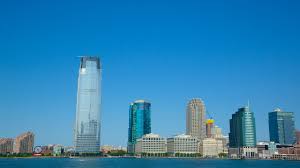
Achieving Effective
The Steps to Achieving Net Zero
Carbon dioxide and other greenhouse gases have the consequences of trapping heat in the atmosphere. They change glaciers to ice caps, intensify storms, and cause sea levels to rise. To stop this, we must emphatically reach zero carbon emissions. This approximates what we refer to as ‘carbon dioxide equilibrium,’ which is getting an equal in and out of the balance of carbon. This is a significant method of easing global warming and saving the Earth as a place for our living. Carbon neutrality is different from net zero because the latter always tries to radically reduce emissions to as close to zero as possible, using offsets only in extreme cases. The best way to achieve Net Zero is to put consistent and continuous efforts into the industry, transportation, and individual levels.
First off, industries emit a great deal of greenhouse gases. Industry uses coal and oil to fuel factories, expelling carbon dioxide into the atmosphere. They also felled trees; it worsens if there are no trees to soak up the carbon dioxide. To resolve this problem, industries must start using clean energy, such as solar and wind, in their operations. They also should pay more attention to the practices that would prevent the destruction of trees and forests. A slight alteration in the various production processes within factories could go a long way toward reducing emissions. A slight alteration in the various production processes within factories could go a long way toward reducing emissions. For example, If a product company uses recyclable materials for the packaging used to make products or uses natural materials such as paper, it can reduce carbon emissions. Also, it would be a good idea to use electricity generated by solar power in production. If factories used this kind of method, they would be able to reduce their carbon emissions significantly.
Secondly, transportation is another major contributor to greenhouse gas emissions. “Cars, planes, and ships burn gas and diesel’, which leads to carbon dioxide emission into the atmosphere. For instance, cars and trucks emit a broad segment of the transportation emissions. Avoiding driving a vehicle, electric car, or public transport may be helpful. Another is to walk and cycle instead of driving short distances. This is also important for large-distance journeys and planes and ships since their efficiency losses count in terms of pollution. My area of particular interest is using public transportation. In this case, walking is beneficial for personal health and can be a practical way to reduce carbon emissions. It is the most realistic method, mainly because it is a method anyone can use daily.
However, Much energy is still generated by burning coal, oil, and gas, which has estimated Greenhouse gas emissions. Many rely on the fuels for electricity heating homes and business organizations’ operations, but there is a better way. They also know that switching to renewable energy sources like solar panels or wind turbines can reduce emissions sharply. Some things that individuals can do include avoiding using large quantities of energy by taking short showers instead of baths, using energy-saving electrical appliances instead of the usual ones, and switching off lights in rooms that are not in use. To do so, governments and companies should ensure that clean energy is adopted to be affordable for all. Campaigns should be launched to increase the amount of clean energy used by governments and businesses, and incentives should be provided to companies that use clean energy to encourage more people to participate in Net Zero.
In sum, achieving carbon neutrality and net zero is not something that the efforts of one individual can accomplish; it requires everyone’s participation. In the industry, in transportation, and through the combined efforts of individuals, a global project to save the planet can be successful. I urge you, not someone else, to participate in this project to save the Earth, which is dying due to global warming and climate change caused by carbon dioxide and greenhouse gases.
By: Yongwon kweon
Write and Win: Participate in Creative writing Contest & International Essay Contest and win fabulous prizes.


